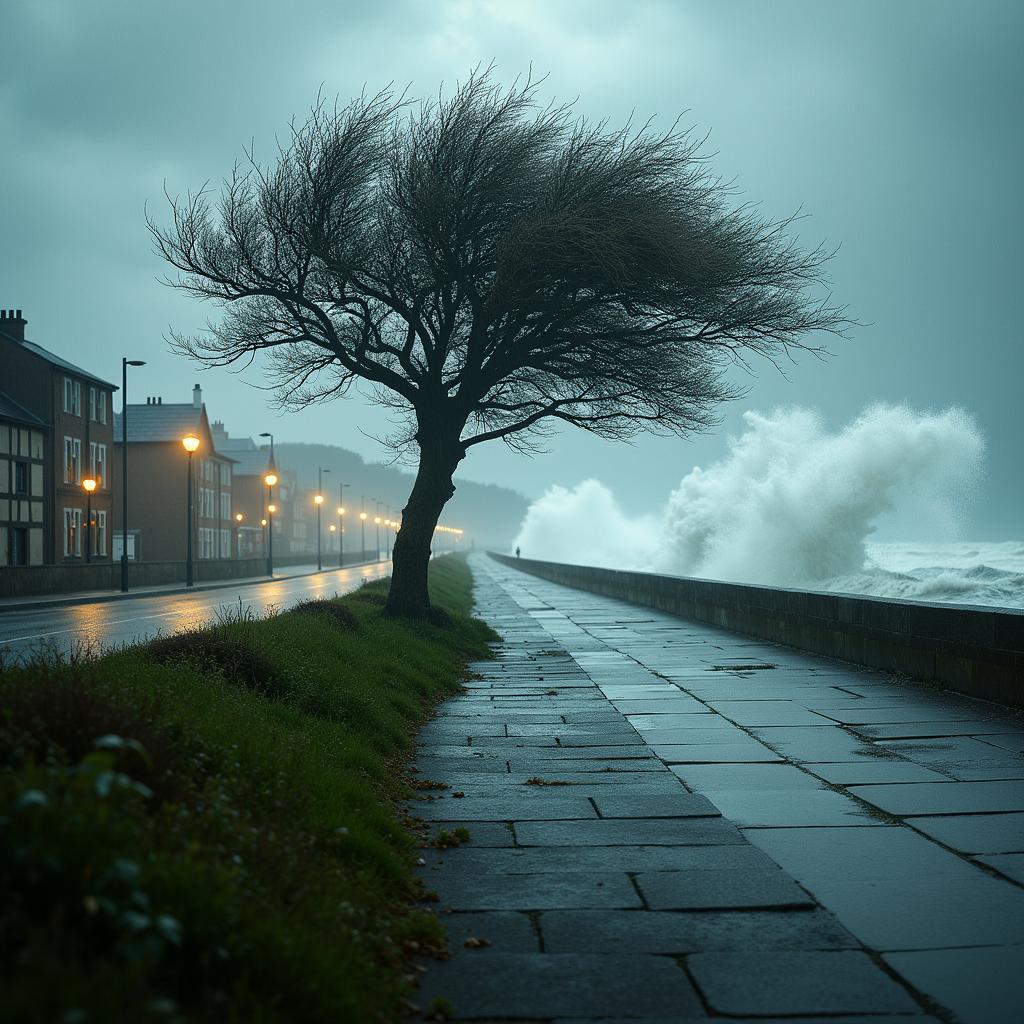
A rare “stay at home” warning is in effect for parts of the UK and Ireland as Storm Éowyn unleashes its fury. With winds hitting a whopping 100mph (160 kmh), this fierce weather system has caused major travel disruptions, power outages, and widespread chaos.
Northern Ireland and central and southwestern Scotland are bearing the brunt of the storm. The UK’s Met Office has issued a red weather warning for these areas, signaling extreme danger. Meanwhile, a yellow snow alert covers parts of northern and central Scotland, with snow expected on higher grounds and rain at lower levels.
Over 93,000 homes and businesses in Northern Ireland are without electricity, and power restoration could take a while. Northern Ireland’s First Minister, Michelle O’Neill, has urged residents to stay indoors, describing the situation as being “in the eye of the storm.” In Ireland, a record-breaking gust of 113 mph was recorded, marking the strongest wind ever measured in the country.
Travel has taken a massive hit. All train services in Scotland have been suspended for safety reasons, while flights across Scotland and Northern Ireland have been canceled. Roads have been closed, and drivers are advised to avoid non-essential travel. Schools in Ireland, Northern Ireland, and Scotland are also closed, with hundreds of parents keeping their kids at home.
Social media is filled with images of the storm’s impact, from collapsed scaffolding in Dublin to empty supermarket shelves. Fire brigades and emergency services are working tirelessly to manage the fallout.
Storm Éowyn is expected to move away by Saturday, but yellow wind warnings remain in place for parts of Scotland and Northern Ireland. Experts are comparing its intensity to past storms like Eunice and Ciarán, which caused significant damage and loss of life. As the world grapples with climate change, some studies suggest these extreme weather events are becoming more severe.
Stay safe, stay indoors, and keep an eye on updates as the storm continues to unfold.
